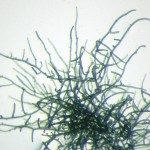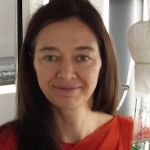Link to Pubmed [PMID] – 31347755
Geobiology. 2019 Nov;17(6):676-690
Several species of cyanobacteria biomineralizing intracellular amorphous calcium carbonates (ACC) were recently discovered. However, the mechanisms involved in this biomineralization process and the determinants discriminating species forming intracellular ACC from those not forming intracellular ACC remain unknown. Recently, it was hypothesized that the intensity of Ca uptake (i.e., how much Ca was scavenged from the extracellular solution) might be a major parameter controlling the capability of a cyanobacterium to form intracellular ACC. Here, we tested this hypothesis by systematically measuring the Ca uptake by a set of 52 cyanobacterial strains cultured in the same growth medium. The results evidenced a dichotomy among cyanobacteria regarding Ca sequestration capabilities, with all strains forming intracellular ACC incorporating significantly more calcium than strains not forming ACC. Moreover, Ca provided at a concentration of 50 μM in BG-11 was shown to be limiting for the growth of some of the strains forming intracellular ACC, suggesting an overlooked quantitative role of Ca for these strains. All cyanobacteria forming intracellular ACC contained at least one gene coding for a mechanosensitive channel, which might be involved in Ca influx, as well as at least one gene coding for a Ca /H exchanger and membrane proteins of the UPF0016 family, which might be involved in active Ca transport either from the cytosol to the extracellular solution or the cytosol toward an intracellular compartment. Overall, massive Ca sequestration may have an indirect role by allowing the formation of intracellular ACC. The latter may be beneficial to the growth of the cells as a storage of inorganic C and/or a buffer of intracellular pH. Moreover, high Ca scavenging by cyanobacteria biomineralizing intracellular ACC, a trait shared with endolithic cyanobacteria, suggests that these cyanobacteria should be considered as potentially significant geochemical reservoirs of Ca.


